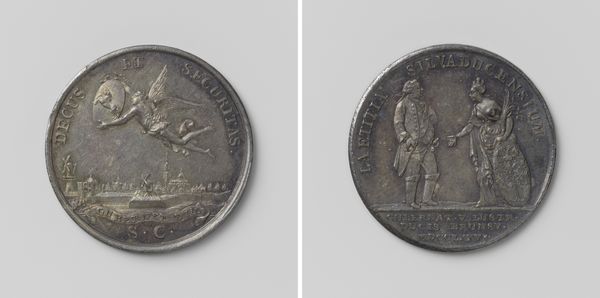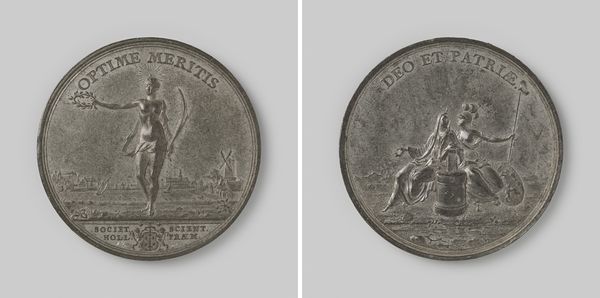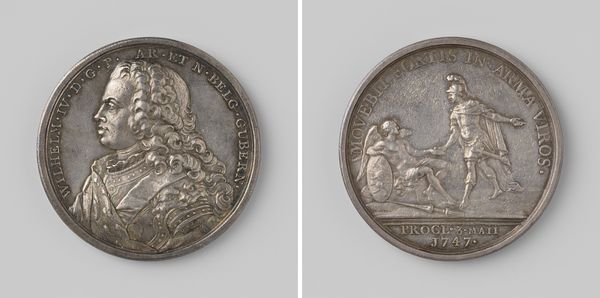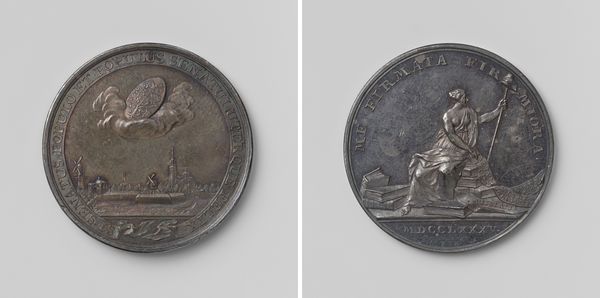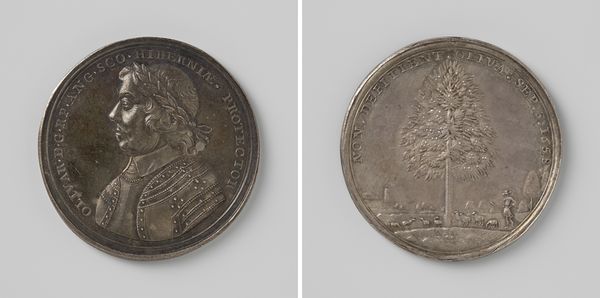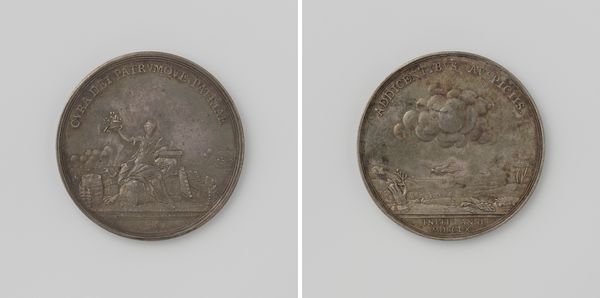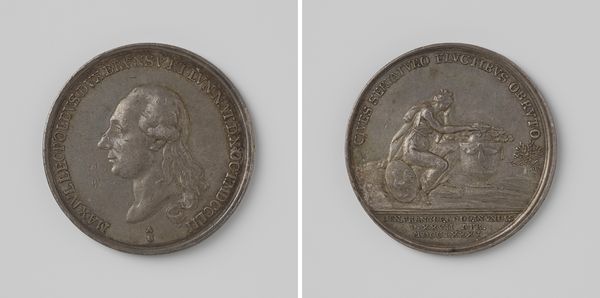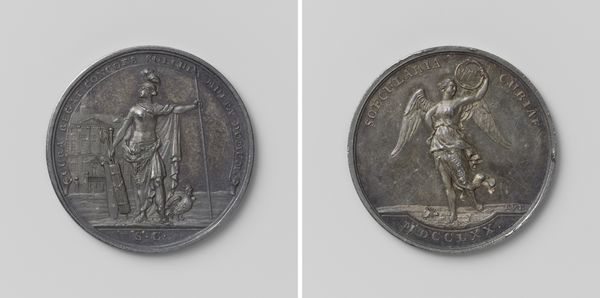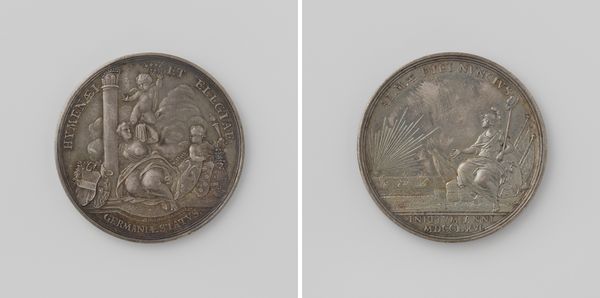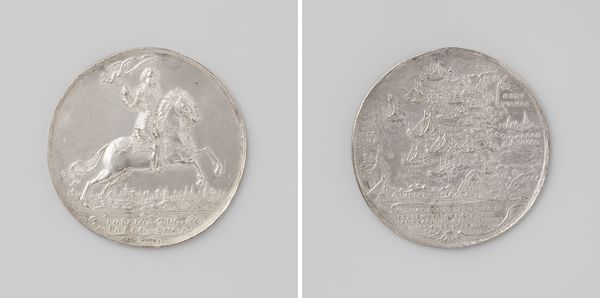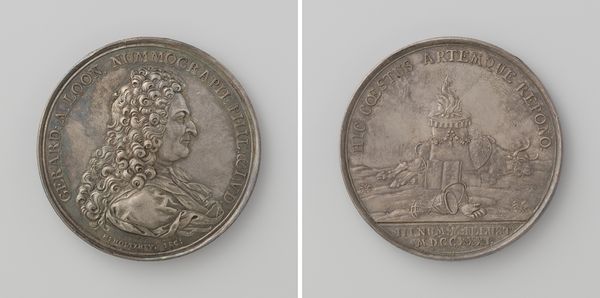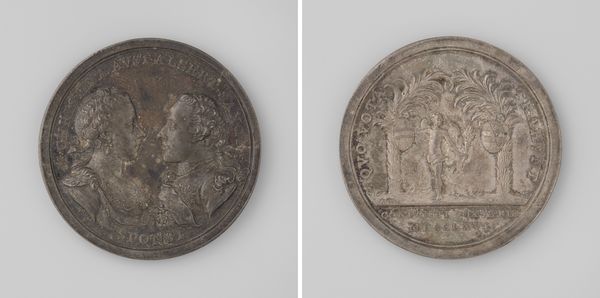
's-Hertogenbosch, vroedschapspenning op Lodewijk Willem Ernst, hertog van Brunswijk-Wolfenbuttel, sinds 25 jaar gouverneur van 's-Hertogenbosch 1776
0:00
0:00
Dimensions: diameter 3.3 cm, weight 13.54 gr
Copyright: Rijks Museum: Open Domain
Editor: Here we have a metal coin, almost like a medallion, titled "'s-Hertogenbosch, vroedschapspenning op Lodewijk Willem Ernst, hertog van Brunswijk-Wolfenbuttel, sinds 25 jaar gouverneur van 's-Hertogenbosch", made in 1776 by Theodorus Victor van Berckel. It seems to commemorate someone. What strikes me is the craftsmanship involved, the fine details rendered on such a small scale. What stands out to you when you examine this piece? Curator: I'm immediately drawn to the materiality of the object. The use of metal, likely silver, isn't merely aesthetic. It speaks to the political economy of the time – the access to precious metals, the skill of the engraver, the societal value placed on commemorating figures of authority. Look at the imagery: it blends allegorical figures with representations of the city itself. Who controlled these representations? Editor: That's a great point. The figure of the governor is positioned with what looks like the personification of the city, right? Who was producing these medallions? Curator: Exactly. And the act of producing and distributing these coins served a distinct purpose. We must consider these objects not only as artworks but also as tools of power. Who commissioned it? How was it circulated? Where would it have been kept? Was it intended as currency or solely as a commemorative object? The answers to these questions reveal much about the societal structures at play. Editor: So, it's less about individual artistic expression and more about understanding the networks of labor, resources, and power that brought it into being. I hadn’t thought about the implications of its production itself. Curator: Precisely. The 'art' is in understanding the broader material and social conditions within which this object existed. We are challenged to see it as part of the system of representation and labor. What appears commemorative is also very deeply constructed. Editor: Fascinating. It changes my perspective entirely, making me think beyond just the figures represented to the forces behind its very existence. Curator: Exactly. Looking at its creation as a historical product shines light on the mechanisms of its historical environment.
Comments
No comments
Be the first to comment and join the conversation on the ultimate creative platform.
